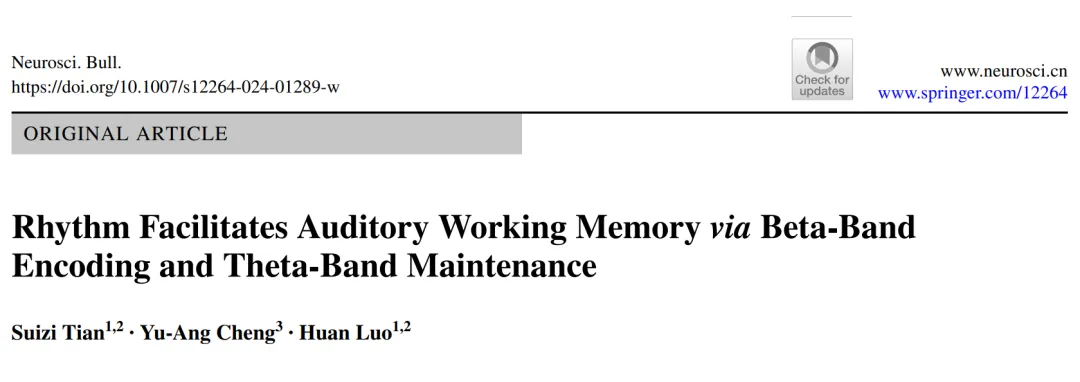Neuroscience Bulletin | Dr. Huang Luo: Rhythm Facilitates Auditory Working Memory via Beta-Band Encoding and Theta-Band Maintenance

Abstract
Rhythm, as a prominent characteristic of auditory experiences such as speech and music, is known to facilitate attention, yet its contribution to working memory (WM) remains unclear. Here, human participants temporarily retained a 12-tone sequence presented rhythmically or arrhythmically in WM and performed a pitch change-detection task. Behaviorally, while having comparable accuracy, rhythmic tone sequences showed a faster response time and lower response boundaries in decision-making. Electroencephalographic recordings revealed that rhythmic sequences elicited enhanced non-phase-locked beta-band (16 Hz–33 Hz) and theta-band (3 Hz–5 Hz) neural oscillations during sensory encoding and WM retention periods, respectively. Importantly, the two-stage neural signatures were correlated with each other and contributed to behavior. As beta-band and theta-band oscillations denote the engagement of motor systems and WM maintenance, respectively, our findings imply that rhythm facilitates auditory WM through intricate oscillation-based interactions between the motor and auditory systems that facilitate predictive attention to auditory sequences.